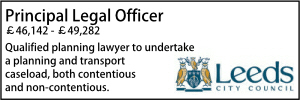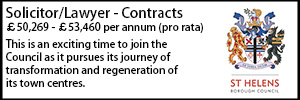High Court judge rejects appeal by couple over listing of property as two self-contained units for purposes of council tax
- Details
A couple has lost a High Court appeal over a council tax valuation dispute with Oxford City Council.
In Salisbury & Anor Valuation Tribunal Of England [2021] EWHC 3136 (Admin) Sir Ross Cranston ruled in favour of the Valuation Tribunal of England that their home included a self-contained flat and was not one house.
The couple’s house was built in 1908 with ground, first, and second floors and was divided into three flats in 1974, but when the couple brought it in 1985 they began restoring it as a single house.
It was entered as a single dwelling at valuation band H for council tax but was later split into band E for the main house and Band A for a second floor flat.
Legal proceedings were started over this by the owners but a compromise reached under which it was valued in band G as a single house.
In April 2019 Oxford told the Valuation Office Agency its inspector had found what was “without doubt a self-contained unit”, on the second floor.
Oxford then changed the valuation to Band G for the main house and Band B for the second floor.
The couple said the second floor was part of their house, accessible only through it and was used occasionally by friends studying in Oxford.
Much of the dispute turned on the status of a landing and whether this formed part of the house’s living space.
The couple said the tribunal had wrongly regarded use of the landing as legally irrelevant to the ‘bricks and mortar' test and declined to consider their submissions on use of the landing in assessing its status.
Sir Ross said: “It was a matter for the tribunal whether it considered that actual use would have assisted it in reaching a decision by reference to the physical characteristics of the building as to the issue of whether there were two self-contained units.
“The tribunal obviously concluded that this was not one of those unusual cases where actual use would assist in the task.”
He said the tribunal was aware of the presence of IT equipment on the landing and it was for the tribunal to decide whether the furniture and equipment were physical characteristics of the property.
The couple argued the tribunal did not consider the privacy implications of access to the second floor via the appellants’ office and that the finding that the landing was a conventional landing was insufficient to resolve the issue of the status of the house.
Sir Ross said: “I find this submission somewhat puzzling in that the appellants accepted that the second floor had features of a self-contained flat.
“The tribunal also expressly recorded its decision that there were two self-contained units at the subject property; it declared that it was satisfied that it consisted of two self-contained units constructed or adapted for use as separate living accommodation.”
Mark Smulian
Sponsored articles
Walker Morris supports Tower Hamlets Council in first known Remediation Contribution Order application issued by local authority
Unlocking legal talent
Lawyer (Planning and Regulatory)
Legal Director - Government and Public Sector
Contracts Lawyer
Locums
Poll













































